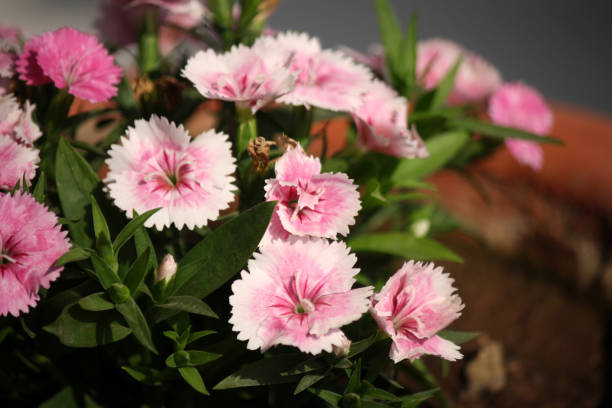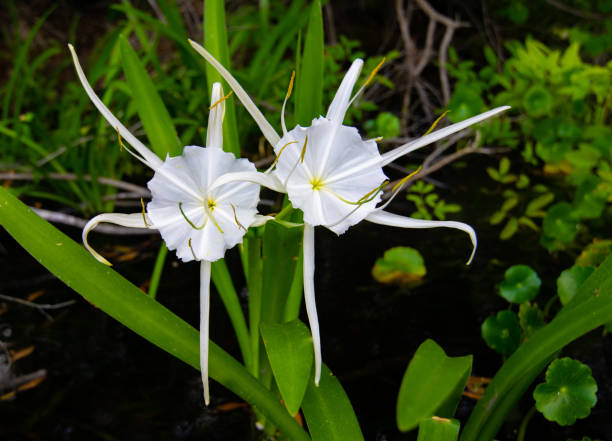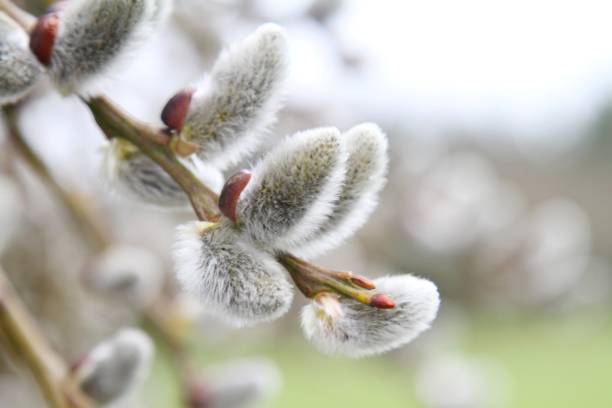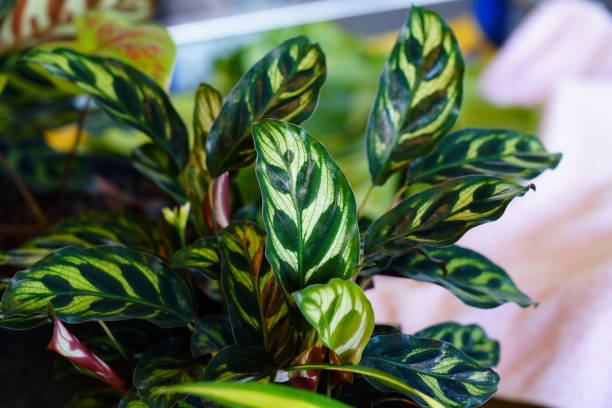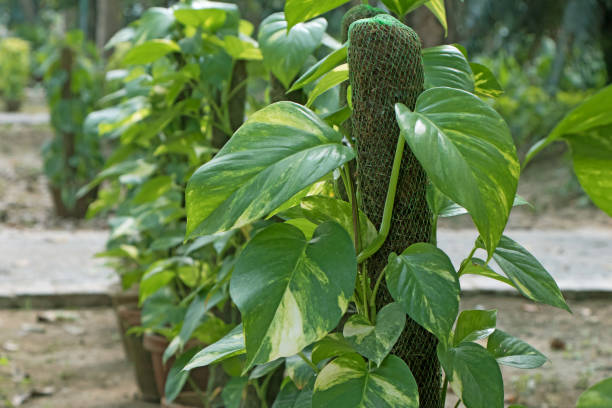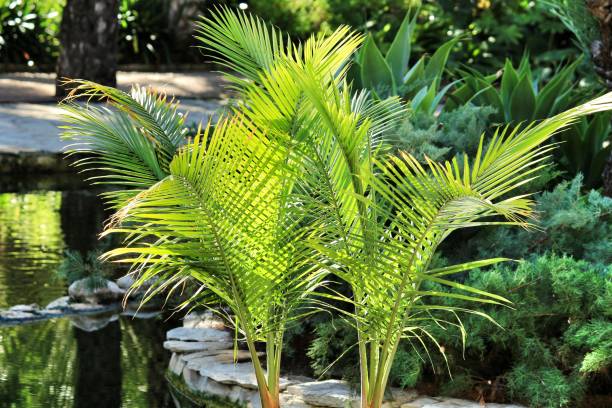How to Grow and Care for the Cast Iron Plant?
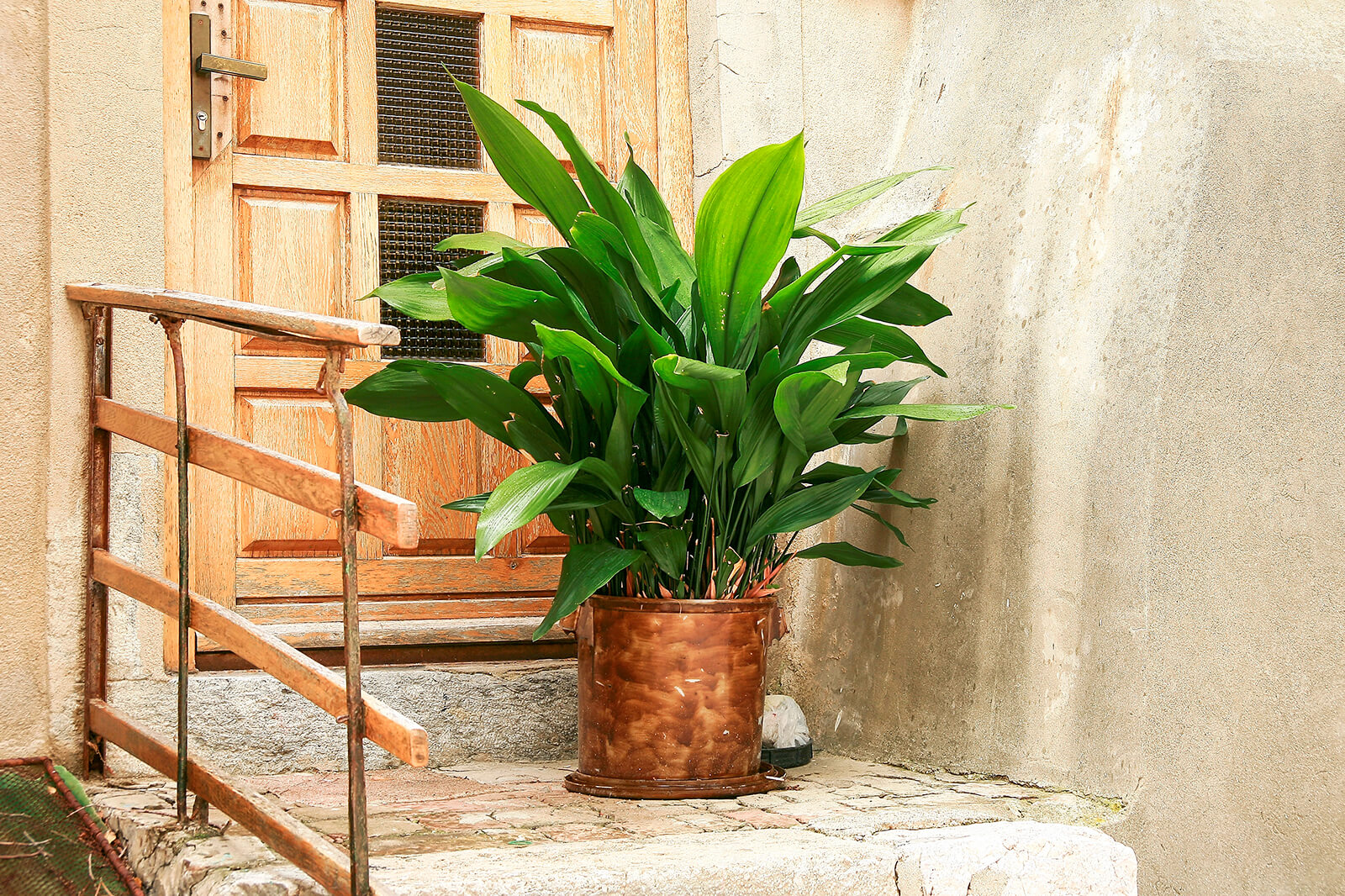
As a houseplant, the Aspidistra elatior or Cast Iron plant, is notorious for being difficult to kill. This plant is also commonly grown for its attractive foliage outdoors within specific growing zones. It can thrive despite being subjected to various forms of neglect and harsh growing conditions, such as low light. Its leaves are arching, glossy, deep green, and lance-shaped, reaching up to 2 feet in length and 4 inches in width. While the Cast Iron plant may produce insignificant cream and purple flowers near its base when grown outside, this typically does not occur when grown indoors. Its growth rate is generally slow, and planting it during spring is ideal.
| Name | Cast Iron plant, bar room plant |
| Botanical Name | Aspidistra elatior |
| Family/Belongs to | Asparagaceae |
| Type Of Plant | Herbaceous, Perennial |
| Size | 1–2 ft. wide, 2–3 ft. tall |
| Exposure Of Sun | Partial, shade |
| Type Of Soil | Well-drained |
| pH of Soil | Acidic, neutral |
| White/Purple | Summer, Spring |
| Color Of Flower | Purple/White |
| Hardiness Zones | 8–10, USA |
| Area | Asia |
Care Instructions for Cast Iron Plants
Cast Iron plants are hardy, long-lasting, and can be grown in areas where other plants may not survive, making them a great option for inexperienced gardeners. They can also tolerate deep shade, making them suitable for growing in areas with little sunlight. These plants are rarely affected by disease and are usually left alone by insects.
Maintaining Cast Iron plants is straightforward. Water them only when the soil is dry, and fertilize them during part of the year. The most common mistake people make when caring for these plants is overwatering them, as they prefer to avoid being in too moist soil. Additionally, it’s important to keep them out of direct sunlight.
Light
Direct sunlight can harm Cast Iron plants, causing their leaves to bleach and burn. As a houseplant, they should be placed in a north-facing window, slightly back from windows that receive strong light. When growing them outdoors, they should be placed in a shaded area with indirect sunlight.
Soil
Cast Iron plants are not picky about soil type as long as it has good drainage. They prefer soil that is organically rich and slightly acidic to neutral. They can grow in loamy, sandy, or clay soils outdoors. For container plants, use standard quality potting mix.
Water
Cast Iron plants are somewhat drought-tolerant but prefer moderate soil moisture. Water young plants regularly to keep the soil moist but not waterlogged. Overwatering can lead to root rot. Water seated plants deeply, allowing the soil to dry out a few inches before watering again. A good rule of thumb is to water when the soil is dry to the touch.
Temperature and Humidity
Cast Iron plants favour temperatures between 60-75 degrees Fahrenheit and are not tolerant of cold weather. Temperatures less than 50 degrees Fahrenheit can kill or damage them. For container plants grown outdoors, bring them inside before frost sets in. Cast Iron plants do well in moderate humidity but can still grow in less humid environments.
Fertilizer
During the spring and summer months, feed Cast Iron plants once a month with an all-purpose liquid fertilizer according to the instructions on the label. Slow-release fertilizer can also be used during spring. Fertilizing during fall and winter is unnecessary. Fertilize only after watering to avoid root burn.”
Varieties of Cast Iron Plants
Cast Iron plants are available in several varieties, including:
‘Variegata‘: This type displays white stripes and green leaves.
‘Asahi‘: As this variety’s green leaves mature, they develop white tips.
‘Hoshi-zora‘: This plant features green leaves with yellow to white speckles that resemble a starry sky.
‘Lennon’s Song‘: This variety’s light green or yellow stripes give its leaves a distinct appearance.
Propagating Cast Iron Plants

Cast Iron plants can be propagated by dividing them. Doing so not only helps create a new plant at a lower cost than buying one from a nursery but also helps prevent mature plants from becoming overloaded.
To begin propagating a new plant, take a piece of the rhizome (the underground stem) with at least two leaves. Plant it in a pot with fresh potting mix or directly into the ground. Ensure that the soil is well-draining and kept slightly moist. Keep the new plant warm but avoid exposing it to direct sunlight. Once you see new shoots emerging, you will know that the new Cast Iron plant has developed a resilient root system. At this point, you can begin treating it as an established plant.
Potting and Repotting Cast Iron Plants
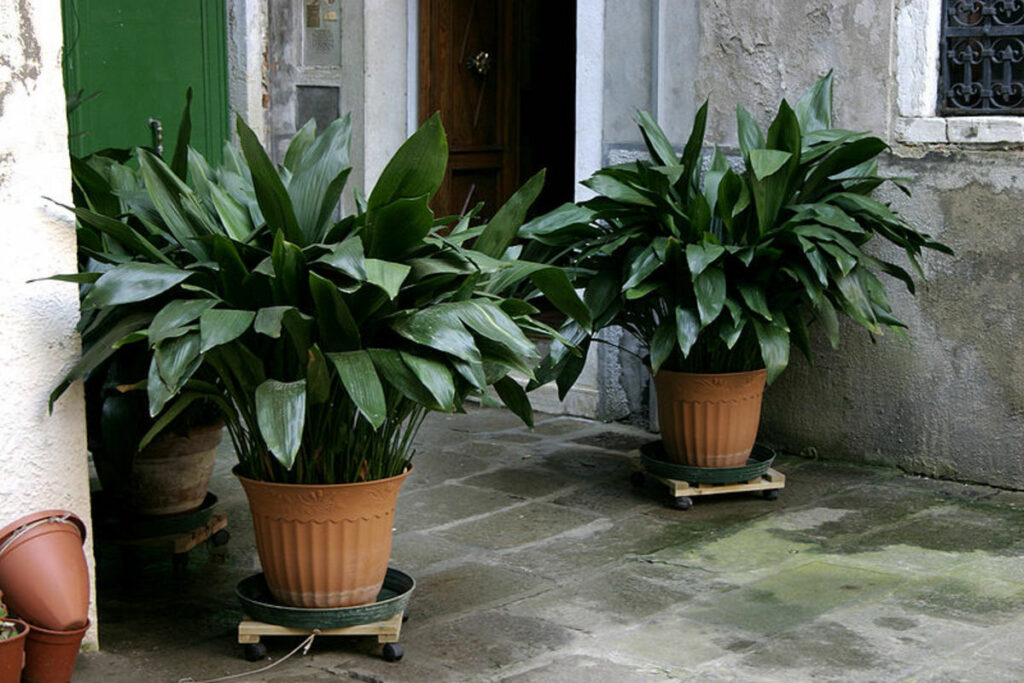
When growing Cast Iron plants in containers, using a pot with good drainage holes is important. An unglazed clay pot is an excellent choice as it allows excess moisture to drain through its walls. To start, select a pot slightly larger than the root ball since these plants grow slowly and will not outgrow their containers quickly.
Once you observe the roots growing out of the soil, you will know it is time to repot your Cast Iron plant into a slightly larger container. This may occur between three to five years. Ideally, report it in the springtime and choose a pot size up. Gently remove the plant from its current pot, and place it at the same depth in the new pot with fresh potting mix.
Common Pests
Cast-iron plants rarely suffer from pest or disease problems, but as houseplants, they may be prone to common pests such as mites and scale. Rinse the foliage to remove the pests, and use insecticidal soap or horticultural oil for severe infestations.
Common Problems With Cast-Iron Plants

Cast-iron plants may develop issues when grown in unfavourable conditions. Browning leaf tips may result from overwatering or underwatering, especially in container plants. Check soil moisture levels before watering and allow the soil to dry a few inches down. Also, make sure excess water can drain from the container. Brown foliage may occur due to too much sunlight or exposure to drafts and extreme temperatures. Check your plant for direct sun, relocate it if necessary, and protect it from temperature extremes.”
How to Utilize Cast Iron Plant?
Cast iron plants were popular in the Victorian era and are still commonly used in homes and offices today. A NASA study discovered that they can even aid in air purification. Some gardeners choose to use them as groundcovers outside, or they can be planted at the back of shaded borders, with smaller shade-loving plants like impatiens or wax begonias in front of them.
Most cast iron plants will overwinter in USDA Gardening Zones 7 to 11. At the same time, some are capable of surviving in Zones 7 to 10. When temperatures drop below 50 degrees Fahrenheit, most outdoor cast iron plants will be damaged or perish.
While Aspidistra flowers are not particularly noteworthy, the plants’ lance-shaped leaves can be cut and used to add structure and interest to flower arrangements.
Companion Plants for Cast Iron
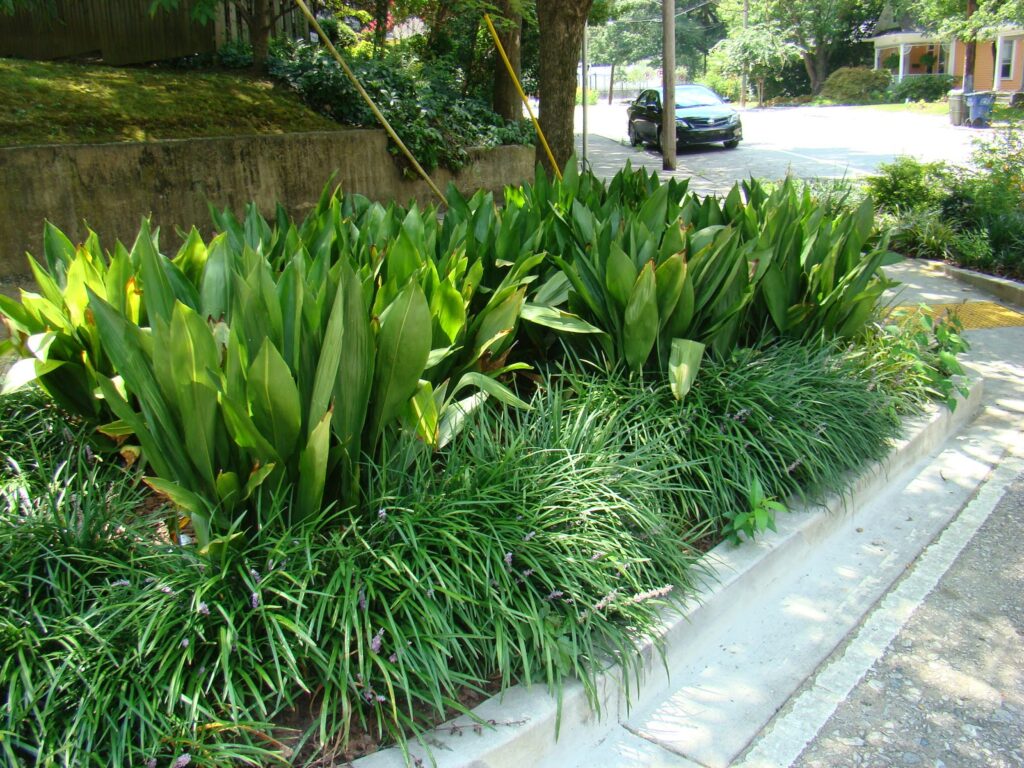
These perennials flourish in shady locations outdoors, making them great companions for cast iron plants in the garden.
- Ferns
- Columbine
- Trillium (also known as toadshade)
- Flax lily
- Solomon’s Seal (Polygonatum)
- Jack in the Pulpit (Arisaema)
- Foam flower
- Lenten Rose (Helleborus)
Where to Grow Your Cast Iron Plant?
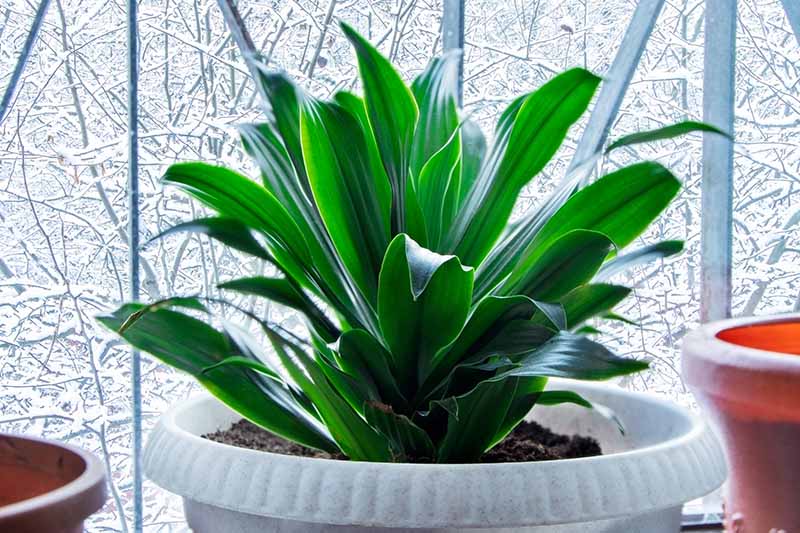
To ensure the healthy growth of cast-iron plants, providing them with suitable light conditions is crucial. Direct sunlight harms the plant and may cause leaf burn, so it is recommended to place it indoors in a north-facing window or a room without windows. The temperature range of 45°F to 85°F is ideal for its growth, and humidity is not a major concern. Therefore, there are several options to choose from when deciding where to grow this plant.
Cast-iron plants can thrive as a perennial for outdoor planting in USDA Hardiness Zones 6 to 11. These plants are typically used as groundcovers in shady areas with dry soil, such as under trees. However, it is important to note that they should be grown in full or partial shade to avoid direct sunlight.
Conclusion
In conclusion, cast iron plants are hardy and low-maintenance, making perfect indoor and outdoor garden choices. They can tolerate low-light conditions and do not require regular watering or fertilization. With their lush green leaves, cast iron plants can add a touch of natural beauty to any space. Their ability to flourish in the dry shade makes them particularly useful as a ground cover. Whether you are a seasoned gardener or a novice, cast iron plants are an easy and the best choice.
Some Frequently Asked Questions
Can cast-iron plants thrive in direct sunlight?
No, cast-iron plants should not be disclosed to direct sunlight, but they need some avoiding sunlight.
Are cast-iron plants low-maintenance?
Yes, cast-iron plants are robust and need minimal care to keep their appearance.
What is the growth rate of cast-iron plants?
Cast-iron plants are slow-growing and may take a few years to reach their full size.
Can cast iron plants grow in direct sunlight?
No, cast iron plants cannot grow in direct sunlight as they may burn their leaves. They require no direct sun, which makes them ideal for growing indoors near north-facing windows or in the deep corners of a room away from windows.
What are some common uses for cast iron plants?
Cast iron plants are often used as groundcovers in areas that are hard to grow other plants, such as under trees. They are also great as background plants in flower beds or in-between filler plants alongside azaleas.
Why is it called a cast iron plant?
The cast-iron plant is known for its sturdy and hardy nature, which earned it the name “cast-iron.” It is also called the parlour palm and features broad, oval, and leathery leaves that grow from creeping rhizomes below soil level.
Are cast iron plants suitable for indoor growing?
Yes, cast iron plants make excellent indoor plants because of their hardy nature and the fact that they can grow large enough to make a statement without taking over the whole room. They are also great at tolerating low light conditions, making them perfect for indoor spaces.
Related Articles
- Carnation Flower: Plant Care and Growing Guide
- How to Grow and Care for the Cast Iron Plant?
- Spider Lily: A Guide to Growing and Caring for this Stunning Flower
- How to Grow and Care for Pussy Willows
- Zebra Plant Care: Growing Aphelandra Squarrosa At Home
- 8 Prosperous Types of Money Plants in Feng Shui to Bring Wealth and Abundance
- A Comprehensive Guide on Growing and Caring for Majesty Palm
- How to Grow and Care for Baby’s Breath?
- Rhododendron Plant: Rhododendron Care In Your Garden
- Iris Flower – All You Want To Know About Them

